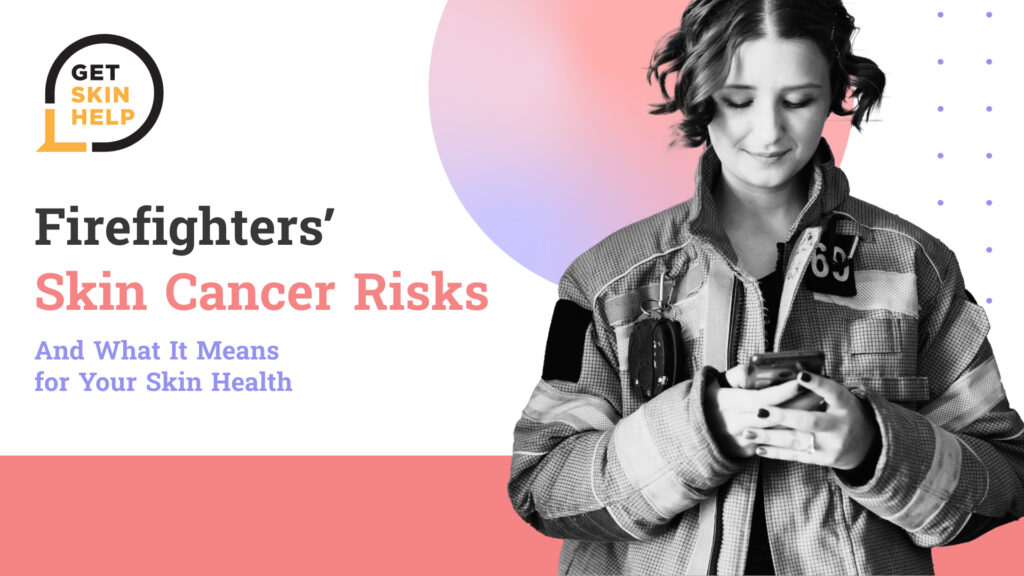
Firefighters save lives, but their heroic work exposes them to hidden dangers that linger long after the flames are out. Research reveals that firefighters face 40% higher melanoma rates and 3x more frequent eczema flare-ups than the general population due to toxic smoke, chemical exposure, and environmental pollutants.
But here’s why this matters to you: the same toxins firefighters encounter—like soot, diesel fumes, and heavy metals—are also found in urban air, household cleaning products, and even charred foods. This article breaks down how occupational skin risks apply to everyday life and provides actionable steps to protect your skin, whether you’re battling blazes or battling commute traffic.
The Invisible Threats: What Firefighters Teach Us About Skin Damage
1. Toxic Smoke Residues (PAHs): The Stealthy Skin Saboteurs
When firefighters extinguish flames, they’re exposed to polycyclic aromatic hydrocarbons (PAHs)—cancer-causing chemicals in smoke that stick to skin and gear. Studies show PAH levels on firefighters’ necks post-fire are 62x higher than safe limits. These toxins seep into pores, triggering inflammation and DNA damage linked to melanoma.
Your takeaway: Urban pollutants like traffic exhaust contain similar PAHs. Early diagnostic is a key, use our AI skin Assessment tool to check your suspicious moles. Also, regular use of oil-based cleansers can dissolve these residues 60% better than water-based washes.
2. Heat + Irritants = Perfect Storm for Eczema
Firefighters’ gear traps heat and sweat, creating a breeding ground for irritant contact dermatitis. A 2024 study found 63% of firefighters develop hand eczema from prolonged glove use. Combine this with stress-induced cortisol spikes, and skin barrier function plummets.
Your takeaway: If your job involves gloves (healthcare, cleaning, etc.), apply a ceramide moisturizer before and after shifts to reinforce your skin’s “shield.”
3. The “Aging Accelerator” in Air Pollution
Firefighters in cities face double exposure: fireground toxins and urban smog. Diesel particles and ozone degrade collagen 2x faster, causing wrinkles and dark spots. In fact, firefighters over 40 have 11% more sunspots than non-firefighters of the same age.
Your takeaway: Antioxidant serums with vitamin C (10-20% concentration) could help neutralize pollution damage. Apply daily under sunscreen.
Skin Protection Strategies Borrowed from Firefighter Research
1. Decontaminate Like a Pro
After pollutant exposure (smoke, dust, city air), shower within 30 minutes using a zinc-based soap to neutralize toxins.
Firefighter tip: They use specialized wipes post-fire; try micellar water on-the-go for urban pollution.
2.Moisturize Strategically
Thick creams (like shea butter) trap irritants. Opt for gel-cream hybrids with hyaluronic acid and niacinamide. Firefighters using ceramide lotions saw 50% fewer eczema flares.
3.Screen Smart, Screen Often
Firefighters are trained to check for “moles that change.” Early melanoma detection boosts survival rates to 99%. Use GetSKinHelp portal to track your moles for the ABCDE rule (Asymmetry, Border, Color, Diameter, Evolution) monthly.
4.Upgrade Your Sunscreen
PAHs + UV rays = 4x more DNA damage. Always protect your skin when exposing it to the sun. Choose mineral sunscreens with iron oxides (blocks HEV light from screens/pollution).
You can find the best skincare approved by dermatologist for your skin condition at GetSkinBeauty.com
When to Call a Dermatologist
- Persistent redness/itching >2 weeks
- Moles or skin lesions that bleed or grow rapidly
- Rashes that resist OTC hydrocortisone
How Pollution Impacts Common Skin Conditions
| Condition | Firefighter Risk | Everyday Equivalent | Solution |
| Melanoma | 40% higher | Outdoor workers, urban dwellers | Regular skin checks with GetSkinHelp + SPF 50 |
| Eczema | 3x flares | Stress + harsh detergent users | Fragrance-free ceramide wash + moisturizers |
| Aging | 11% more spots | Sunbathers, smokers | Retinol + vitamin C serum |
Ready to Take Charge of Your Skin Health?
Your skin faces daily battles against pollution, stress, and hidden toxins—arm it with expert care. Whether you’re noticing persistent rashes, suspicious moles, or simply want a pollution-proof skincare plan, our dermatologists are here to help. Book your appointment today to start protecting your skin’s future.
Sources:
1. AlHajj S, Thomas L, Garis L, Pike I. (2024). Firefighter Occupational Injuries and Fatalities: Analysis of Accepted Claims, 2007 – 2021. A report prepared by the BC Injury Research and Prevention Unit. Vancouver, BC, Canada.
2. Occupational Cancer Research Centre. Burden of occupational cancer in Canada: Major workplace carcinogens and prevention of exposure. Toronto, ON: 2019
3. Pinkerton L, Bertke SJ, Yiin J, et al Mortality in a cohort of US firefighters from San Francisco, Chicago and Philadelphia: an update Occupational and Environmental Medicine 2020;77:84-93.


